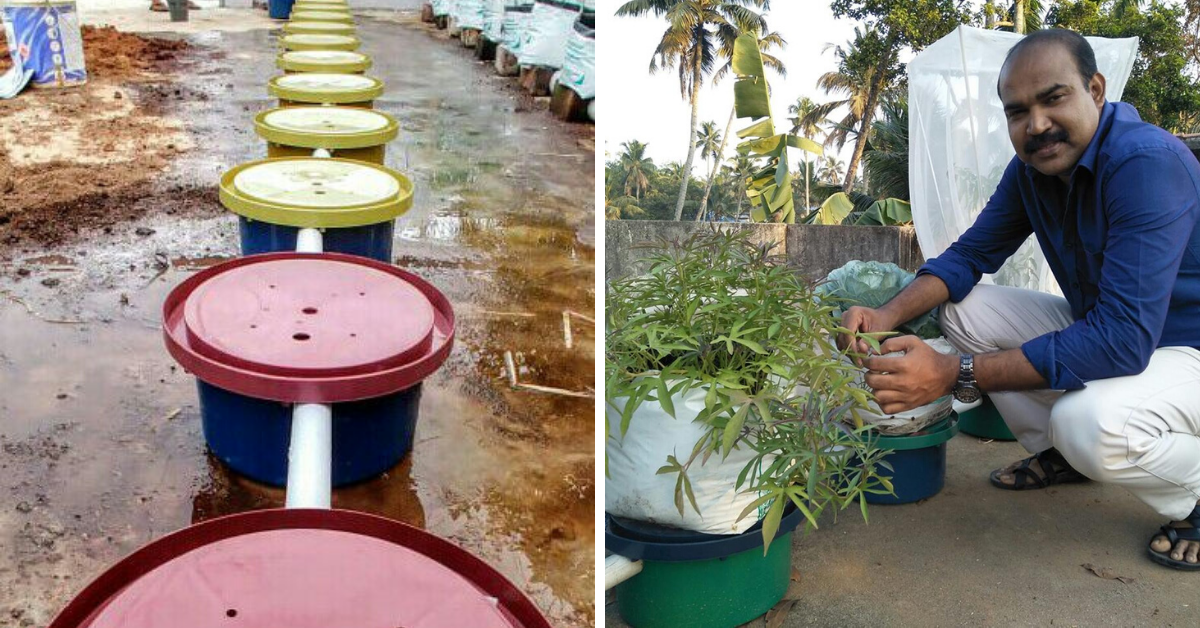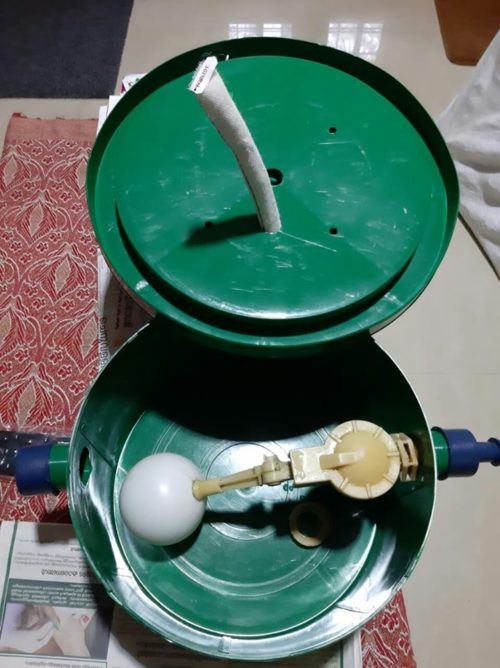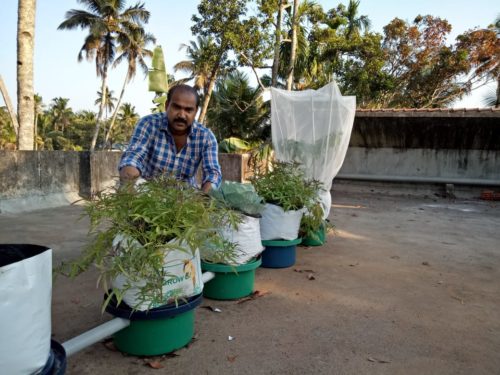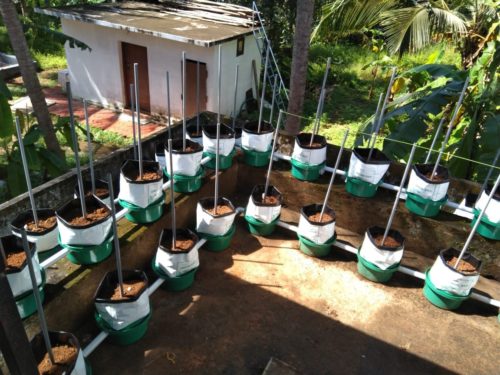Kerala Man’s Low-Cost System Waters Upto 10 Plants On Its Own!
“I never thought this system would become so famous. In the past 8 months, I’ve sold more than 20,000 of these units and the orders are just flowing in!” Biju exclaims.

When it comes to maintaining a garden or even a farm, watering the plans is one of the most important chores that needs to be performed every day. It is not something that can be skipped.
To make this process a little easier for people, Biju Jala from Karunagapally, Kottayam has created a low-cost irrigation system, which is easy to set up and can water up to 1o plants on its own. Additionally, this system, which is ideal for grow bags, also prevents insects and pests from causing damage to the plant.
The Irrigation System

Up until 2010, Biju Jalal was working as an accountant in UAE. It was only after returning to Kerala that he started investing his time and effort in farming.
“After returning to Kerala, I set up a terrace garden with almost 20 grow bags, filled with vegetables like carrots, tomatoes, green chillies and even different varieties of papayas. Since it was set up on the terrace, I would have to find time to water them atleast twice a day. And that’s when I decided to implement wick irrigation for my plants,” explains Biju.
In a conventional wick irrigation system, a bucket is filled with water which is then covered with a tray that has an incision in the middle. Through the incision, a thick cotton wick is introduced. One end of the wick touches the water while the other end of the wick goes through the grow bag which is placed on top of the tray.
This way, the required amount of water is taken in by the plant. The only difficulty here is that you need to keep filling in the buckets with water.

Biju decided to introduce a few tweaks in this system and make it more efficient. Instead of refilling the water in the buckets, he decided to connect the buckets with PVC pipes horizontally. This could eventually be connected to a water hose.
So when the buckets ran out of the water, the user could simply turn on the hose and fill up the buckets. The interconnecting PVC pipes would provide an equal amount of water to all the buckets.
The system started gaining a lot of popularity at expos and farming workshops, but one feedback that Biju got was that the decreasing water levels could not be seen. To solve this issue, he expanded the product even further and added a low-cost valve to it that could automatically pump water if the system is connected to the tank.
One unit of this wick irrigation system which consists of 10 interconnected buckets costs only upto 3000 rupees.

“I never thought this system would become so famous. In the past 8 months, I’ve sold more than 20,000 of these units, and the orders are just flowing in!” Biju exclaims.
Majudeen from Kannur, Kerala who has purchased a unit shares that it has helped him grow a large variety of vegetables on the terrace including beans and chillies. “The tray covering the water also ensures that there is no infestation, which is a great relief,” he explains.
Tips For The Grow bags

Although the irrigation system makes the maintenance a lot easier, Biju says that the grow bags need to be given a lot of attention.
Here are some tips that Biju feels will make this easier:
- The soil in the grow bags must be dried for atleast 2 weeks. Then the soil must be sprinkled with water daily along with dolomite ( a mixture of magnesium and calcium). This will make it ready to absorb the water.
- Before the wick is placed inside the grow bag, it should be soaked for atleast 10 minutes in water.
- Use natural pesticides like a mixture of garlic and neem leaves to keep pest and insects away.
- If the grow bag is placed under direct sunlight, cover the exposed parts of the grow bag with dried leaves or paper to avoid loss of moisture.
“If a family has three units of this irrigation system, they can easily grow all the vegetables for an entire year without much effort,” Biju explains.
We hope that Biju’s technique has motivated you to try out this irrigation system. Do let us know if his tips worked for you.
Also Read: Kerala Friends Build Homes & Schools for Flood Victims, Take No Labour Charges
(Edited by Gayatri Mishra)
Like this story? Or have something to share? Write to us: [email protected], or connect with us on Facebook and Twitter.
If you found our stories insightful, informative, or even just enjoyable, we invite you to consider making a voluntary payment to support the work we do at The Better India. Your contribution helps us continue producing quality content that educates, inspires, and drives positive change.
Choose one of the payment options below for your contribution-
By paying for the stories you value, you directly contribute to sustaining our efforts focused on making a difference in the world. Together, let’s ensure that impactful stories continue to be told and shared, enriching lives and communities alike.
Thank you for your support. Here are some frequently asked questions you might find helpful to know why you are contributing?


This story made me
-
97
-
121
-
89
-
167













